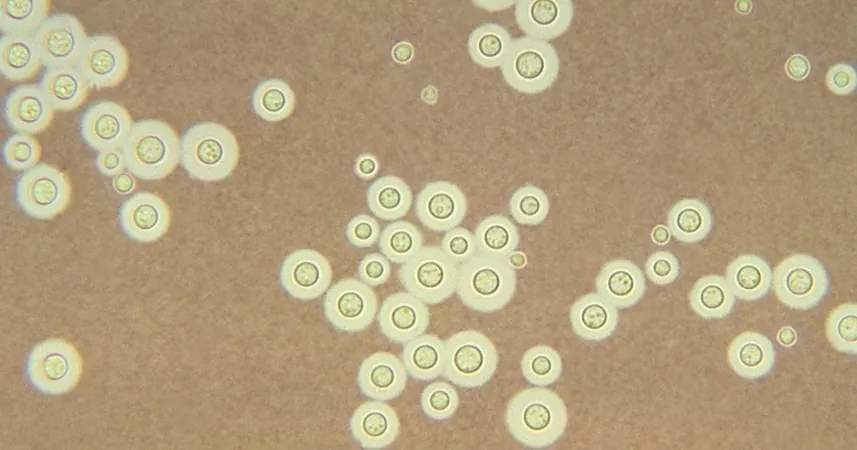
Unveiling Cretaceous Secrets: Ancient Tsunamis Revealed in Amber
2025-05-27
Author: Jacques
Ancient Clues of Catastrophe
Identifying traces of tsunamis in the fossil record is a challenging task. Often, these deposits are eroded or mistaken for other forces of nature, like powerful storms.
A Groundbreaking Discovery
In an intriguing new study, researchers led by Aya Kubota from the Geological Survey of Japan and Chuo University have uncovered spectacular amber-rich beds in a quarry on Hokkaido Island, Japan. These amber deposits, nestled between layers of sand and mudstone, provide a unique snapshot of ancient events.
The Magic of Amber
Radiometric dating of zircon grains found in tuff layers between the mudstone and amber reveals that this remarkable sedimentary formation dates back around 116 to 114 million years. The study of these so-called flame structures—created when pliable materials are reshaped before they fully harden—offers insights into the origins of these unusual amber deposits.
Tsunami Origins
During the early Cretaceous period, this area was an ocean basin where significant amounts of tree resin were abruptly propelled into the open ocean by tsunami backwash from nearby coastlines. This tree resin eventually settled on the seabed, becoming engulfed by sediments and transformed into amber.
Hunting for Tsunami Evidence
The findings suggest that similar deposits formed from land-based materials swept into the sea could aid future searches for more tsunami evidence. The researchers emphasize that distinguishing these geological markers is vital for understanding ancient mega-events.
Tsunamis: Nature's Fury Unleashed
While most tsunamis arise from sudden shifts in the seafloor due to earthquakes, they can also be triggered by landslides, volcanic eruptions, or even meteor impacts. Modern records show over 2,000 tsunamis in the last 4,000 years, but this figure likely underrepresents the true scope of these cataclysmic events.
Understanding the Past to Prepare for the Future
Geological evidence is crucial for deciphering the history of these extreme events, serving as a foundation for risk assessments and hazard preparedness strategies today and for future generations.
Published Insights
These exciting findings are detailed in the journal "Scientific Reports," highlighting the potential of ancient amber to unlock the mysteries of our planet’s violent past.









 Brasil (PT)
Brasil (PT)
 Canada (EN)
Canada (EN)
 Chile (ES)
Chile (ES)
 Česko (CS)
Česko (CS)
 대한민국 (KO)
대한민국 (KO)
 España (ES)
España (ES)
 France (FR)
France (FR)
 Hong Kong (EN)
Hong Kong (EN)
 Italia (IT)
Italia (IT)
 日本 (JA)
日本 (JA)
 Magyarország (HU)
Magyarország (HU)
 Norge (NO)
Norge (NO)
 Polska (PL)
Polska (PL)
 Schweiz (DE)
Schweiz (DE)
 Singapore (EN)
Singapore (EN)
 Sverige (SV)
Sverige (SV)
 Suomi (FI)
Suomi (FI)
 Türkiye (TR)
Türkiye (TR)
 الإمارات العربية المتحدة (AR)
الإمارات العربية المتحدة (AR)